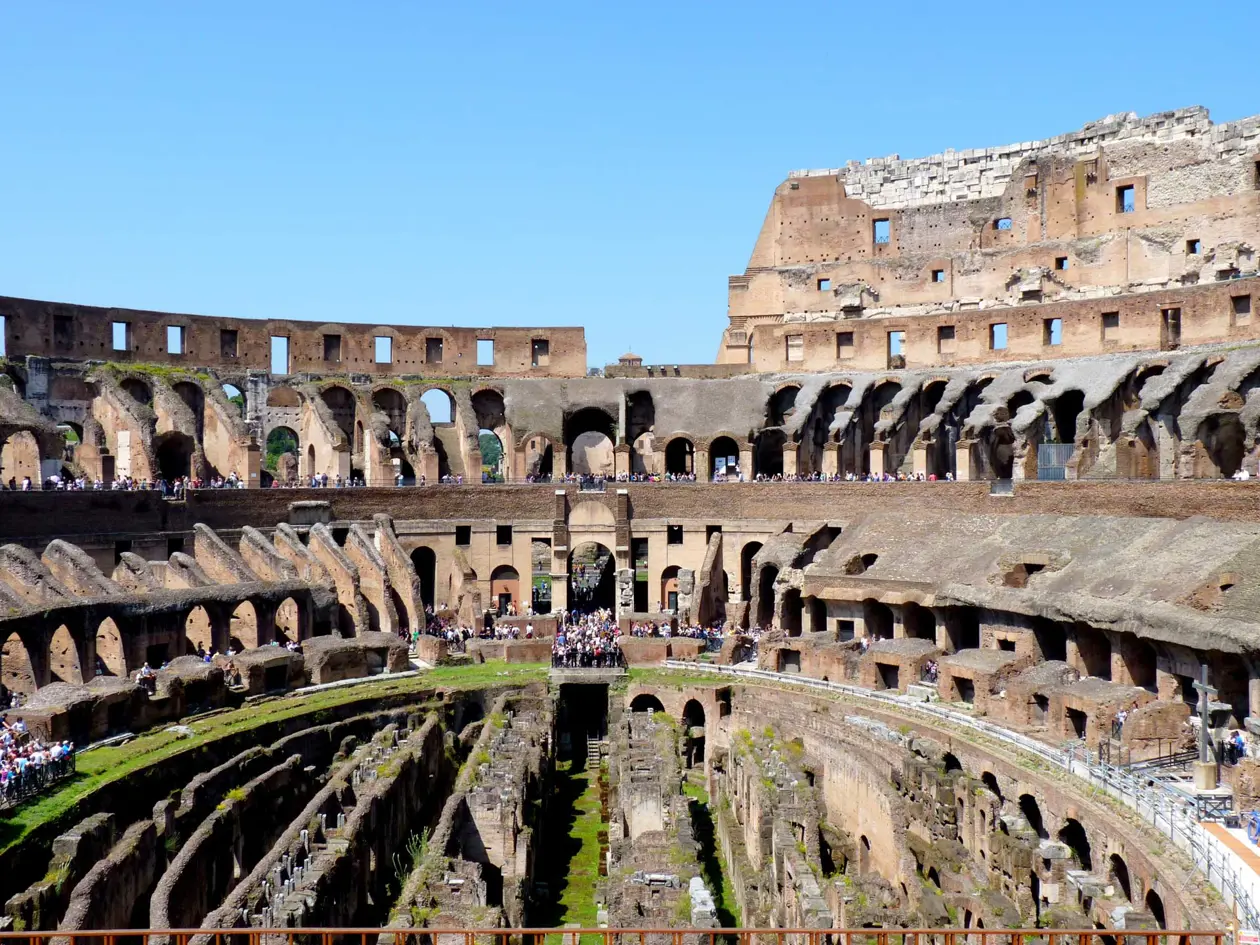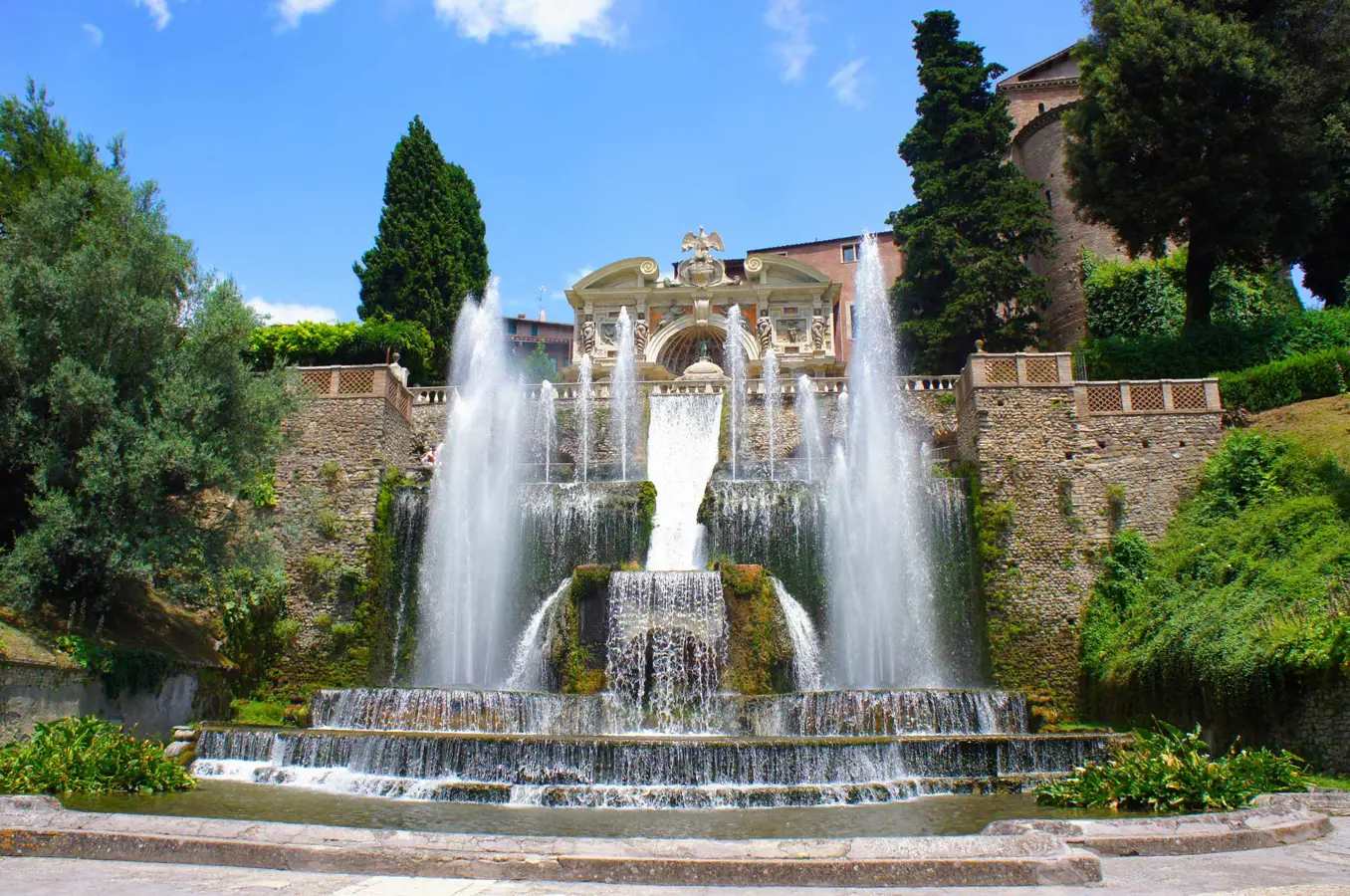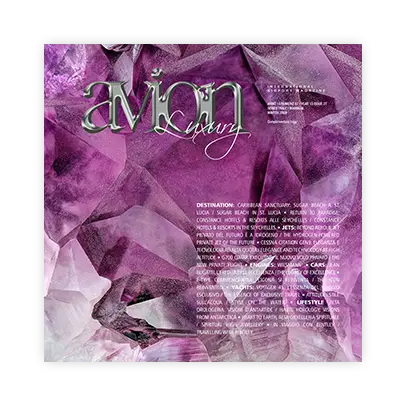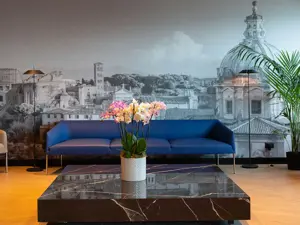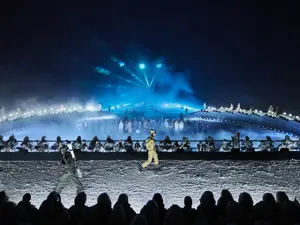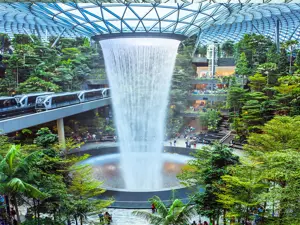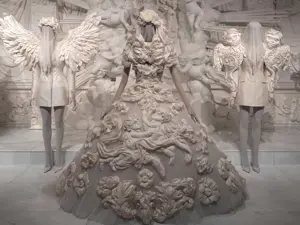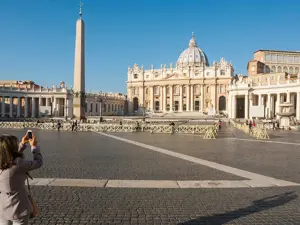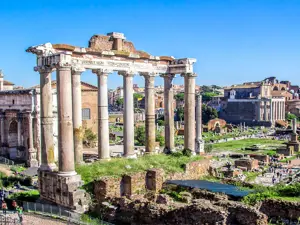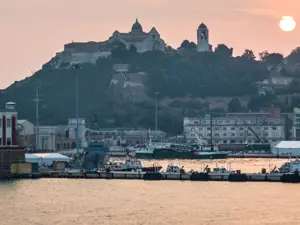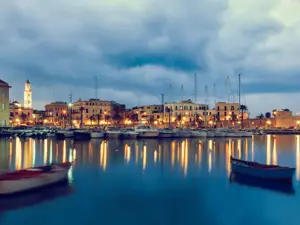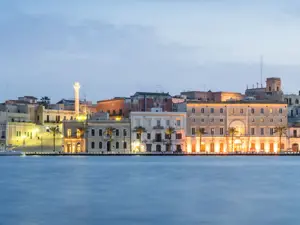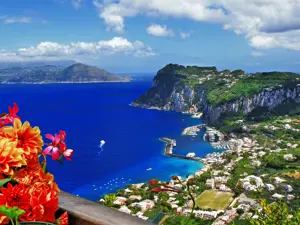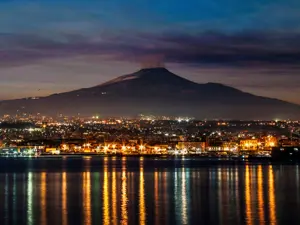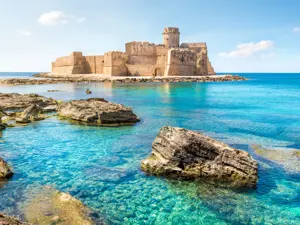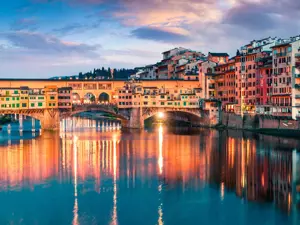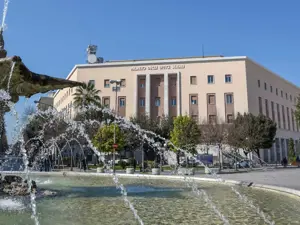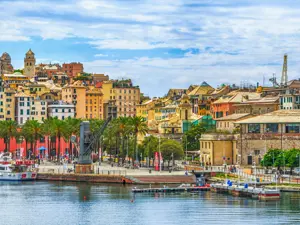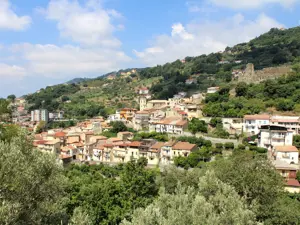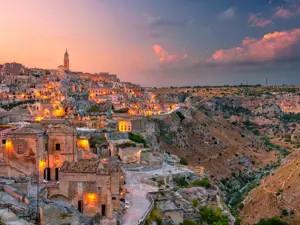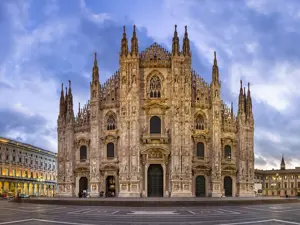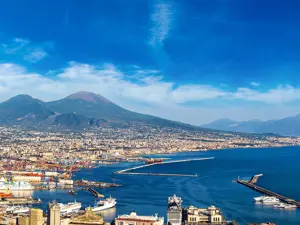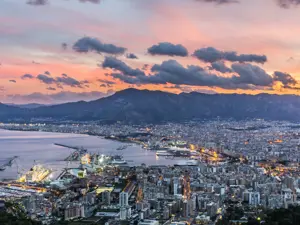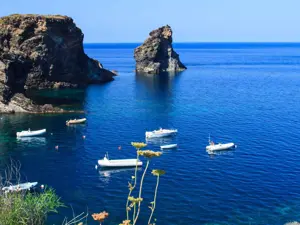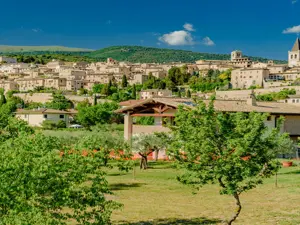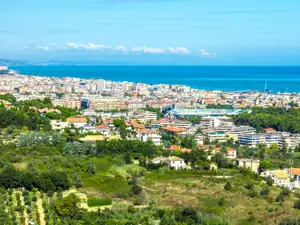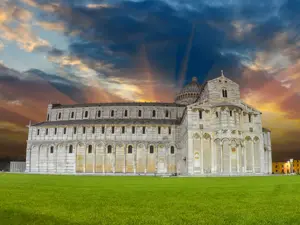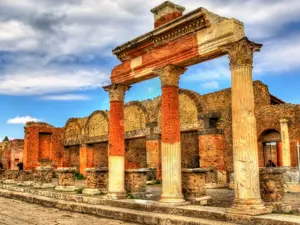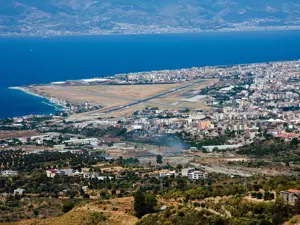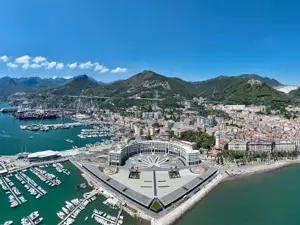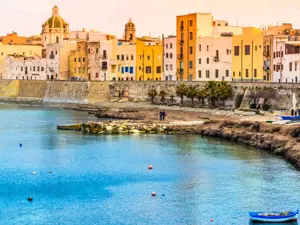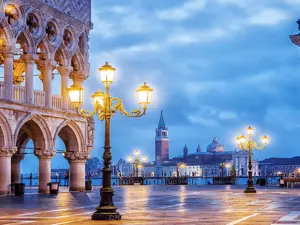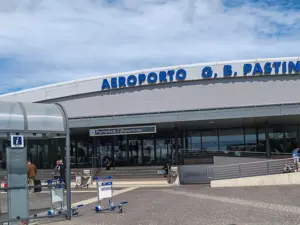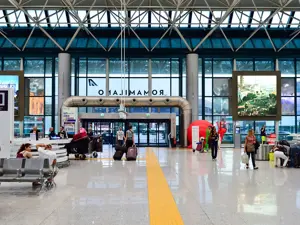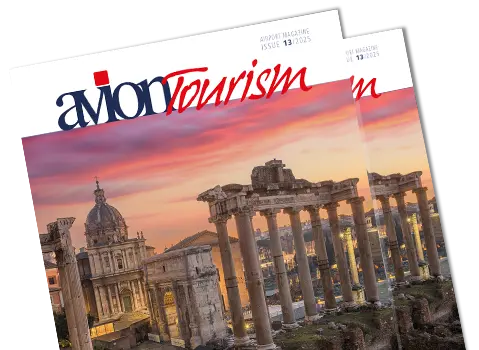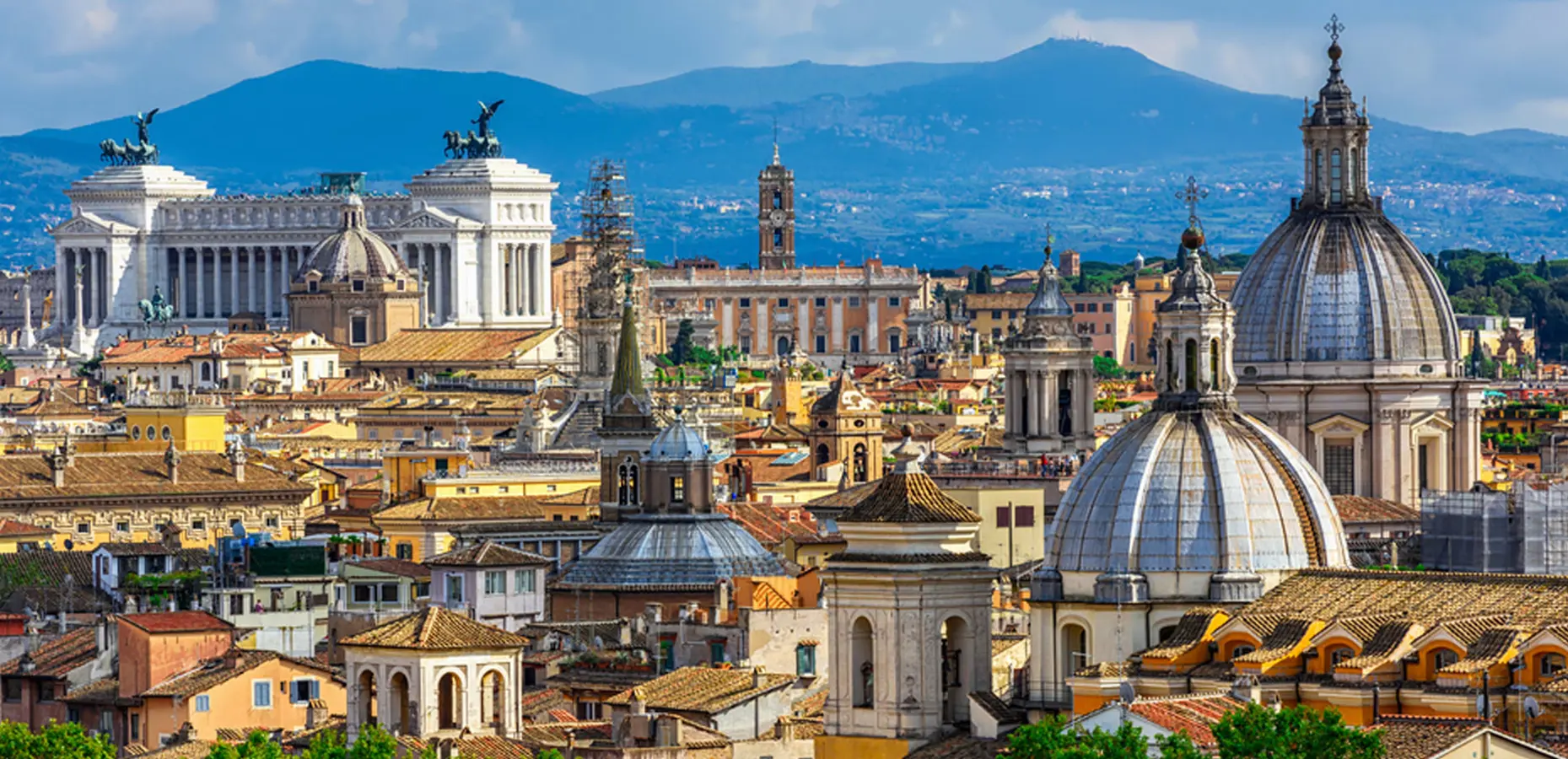
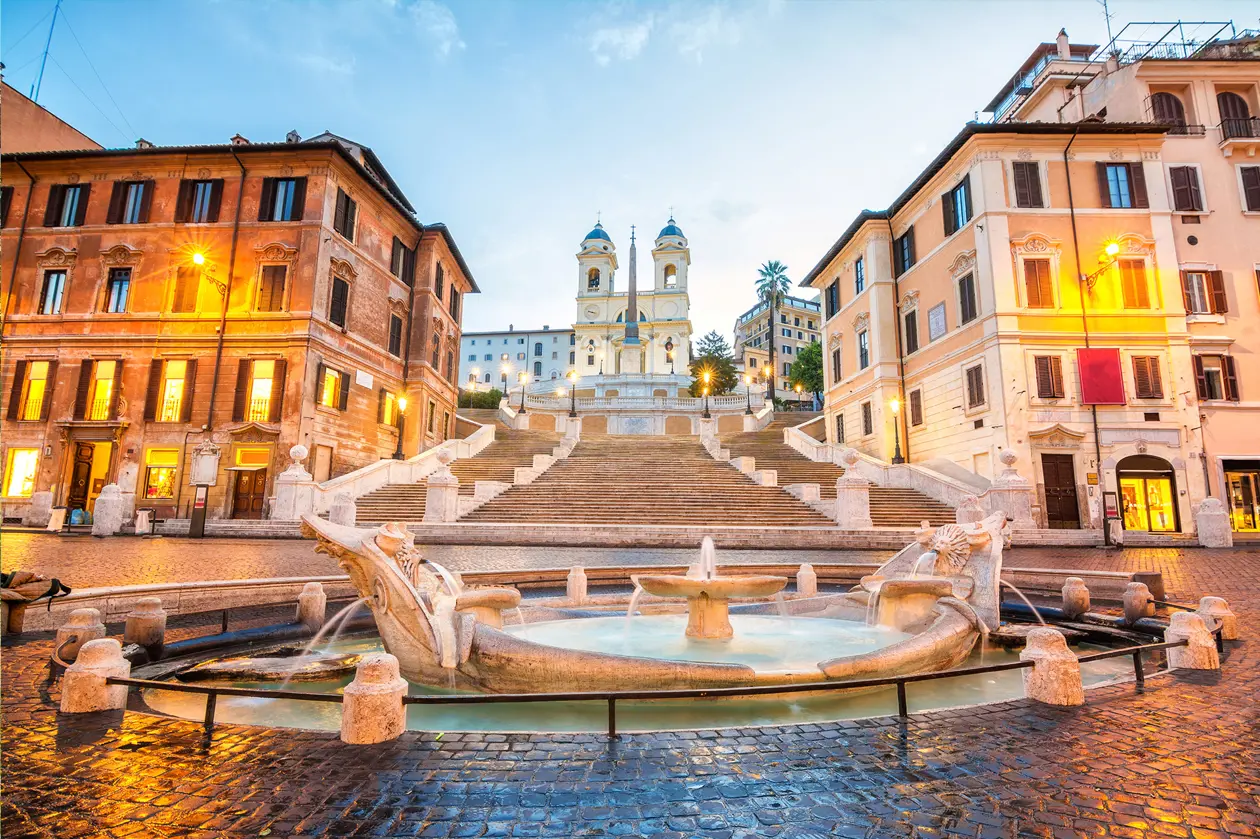
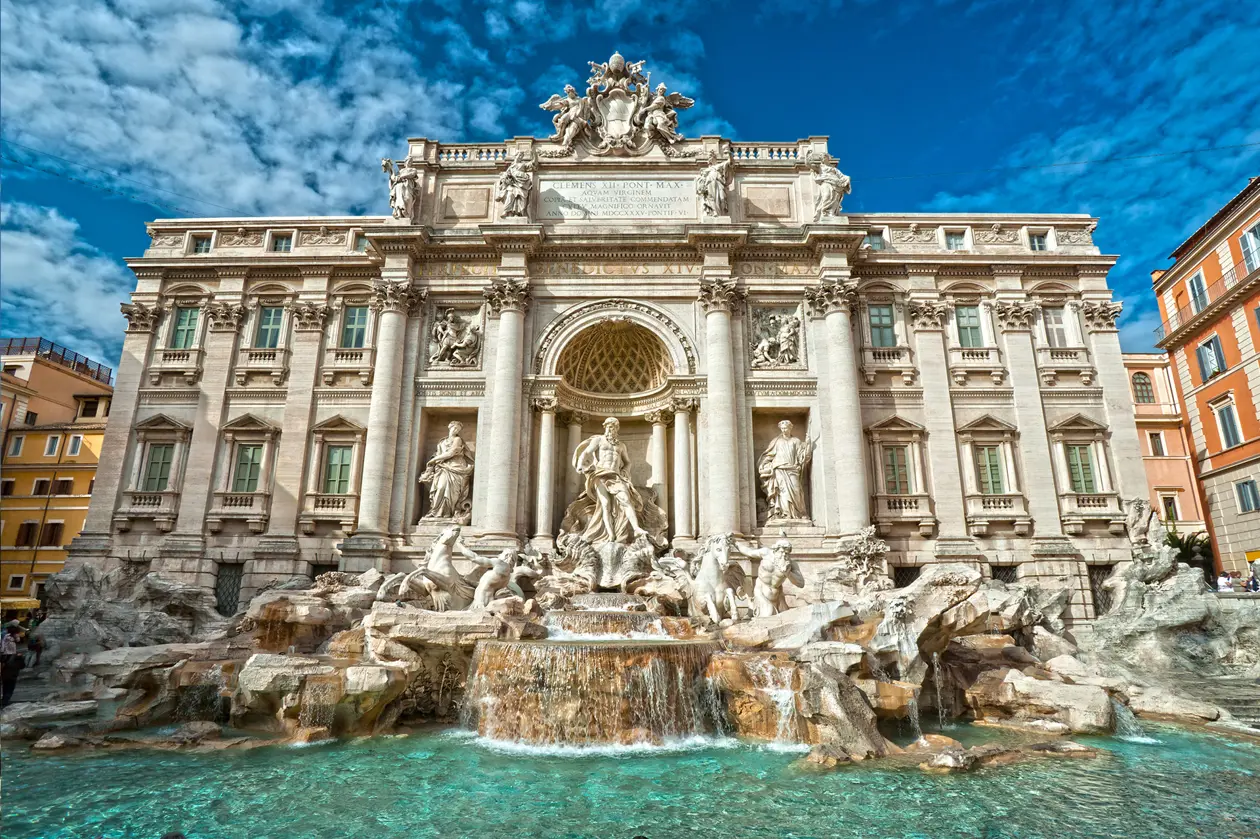
St. Peter's Square in Roma

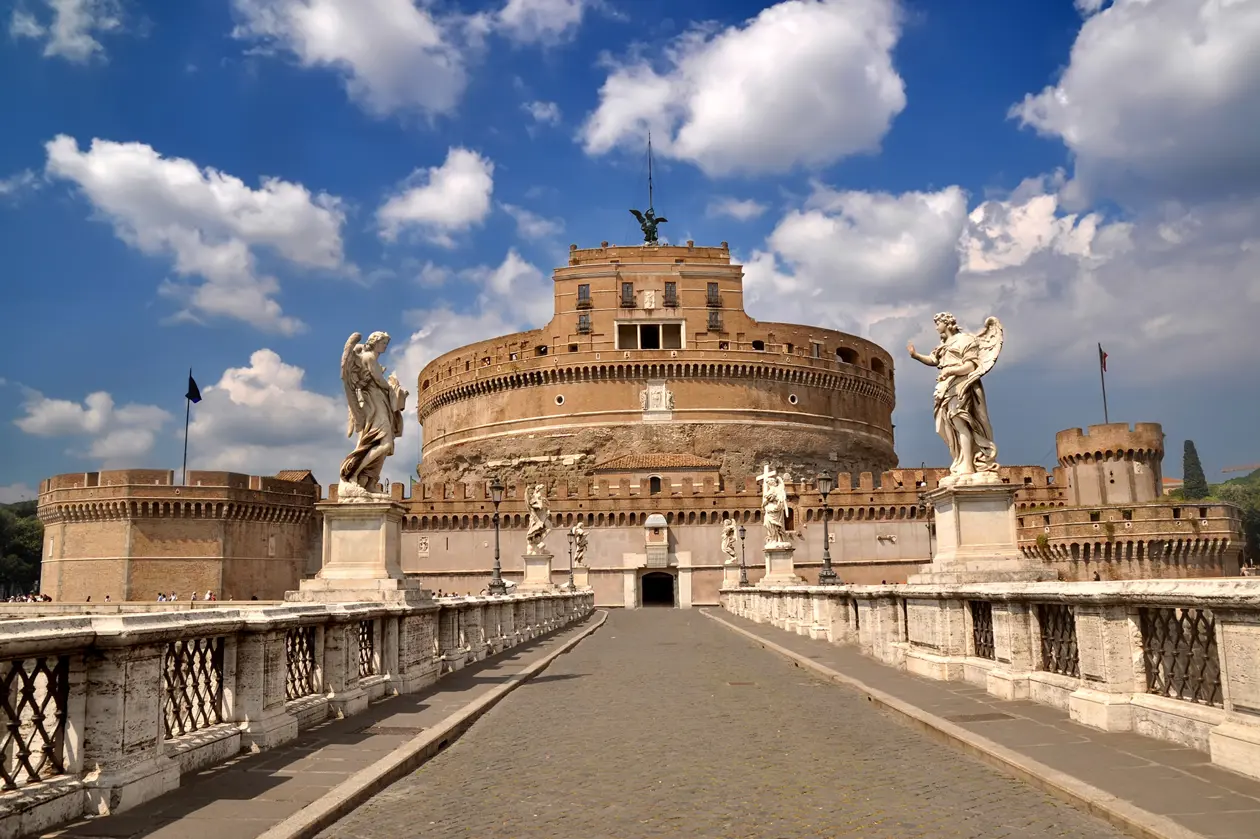
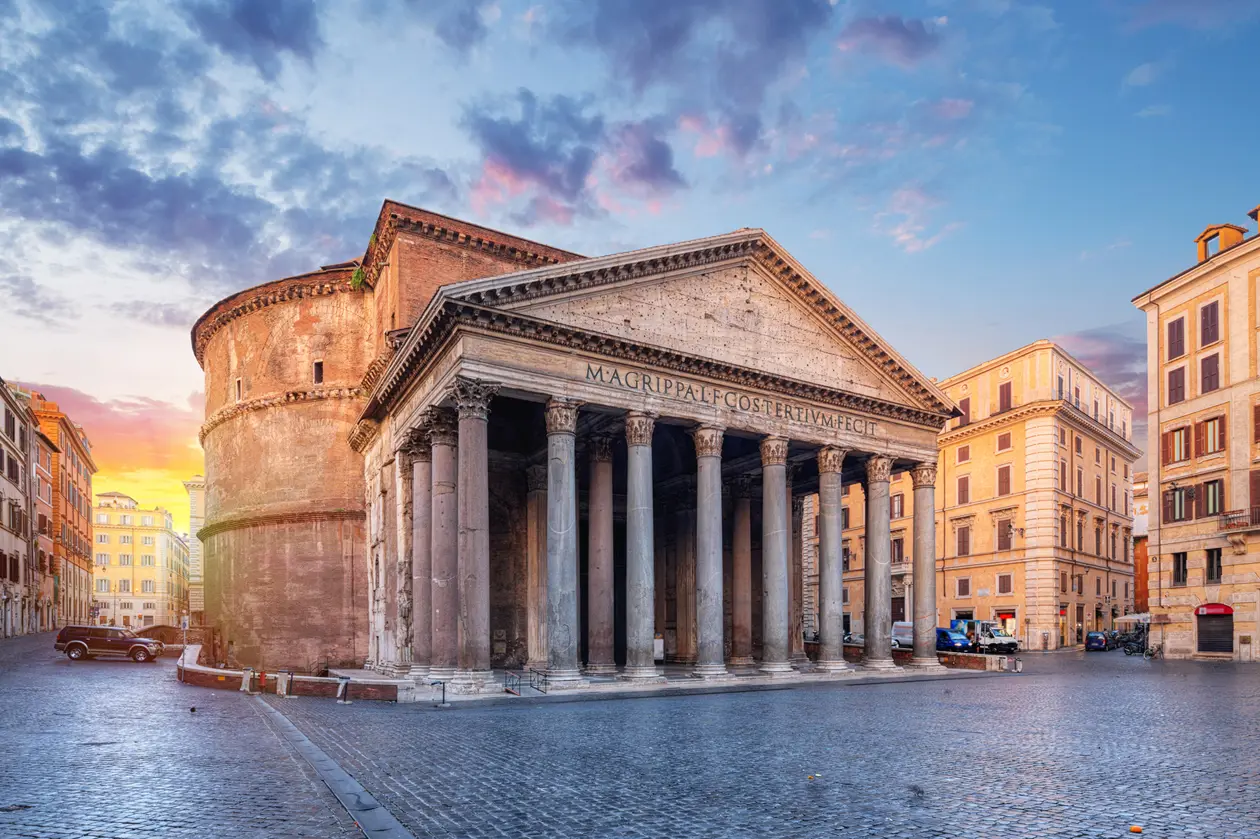
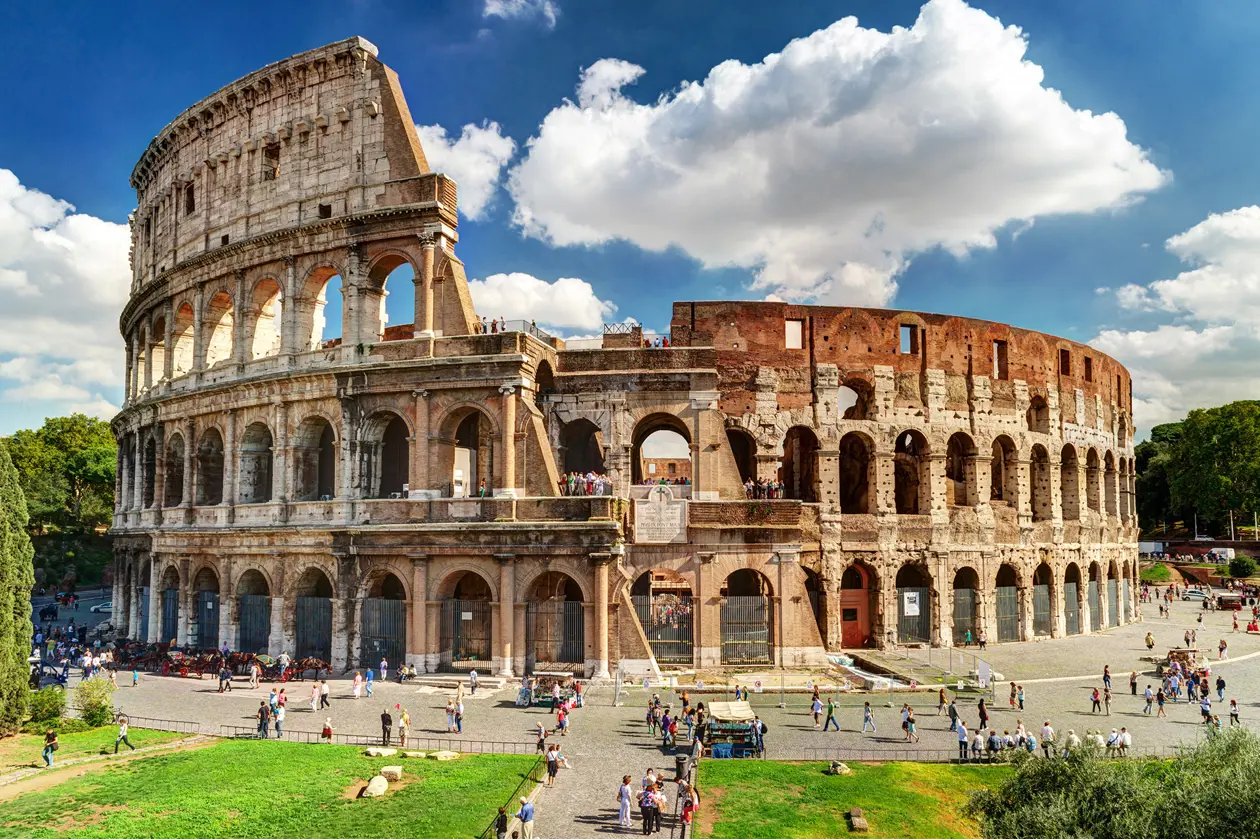
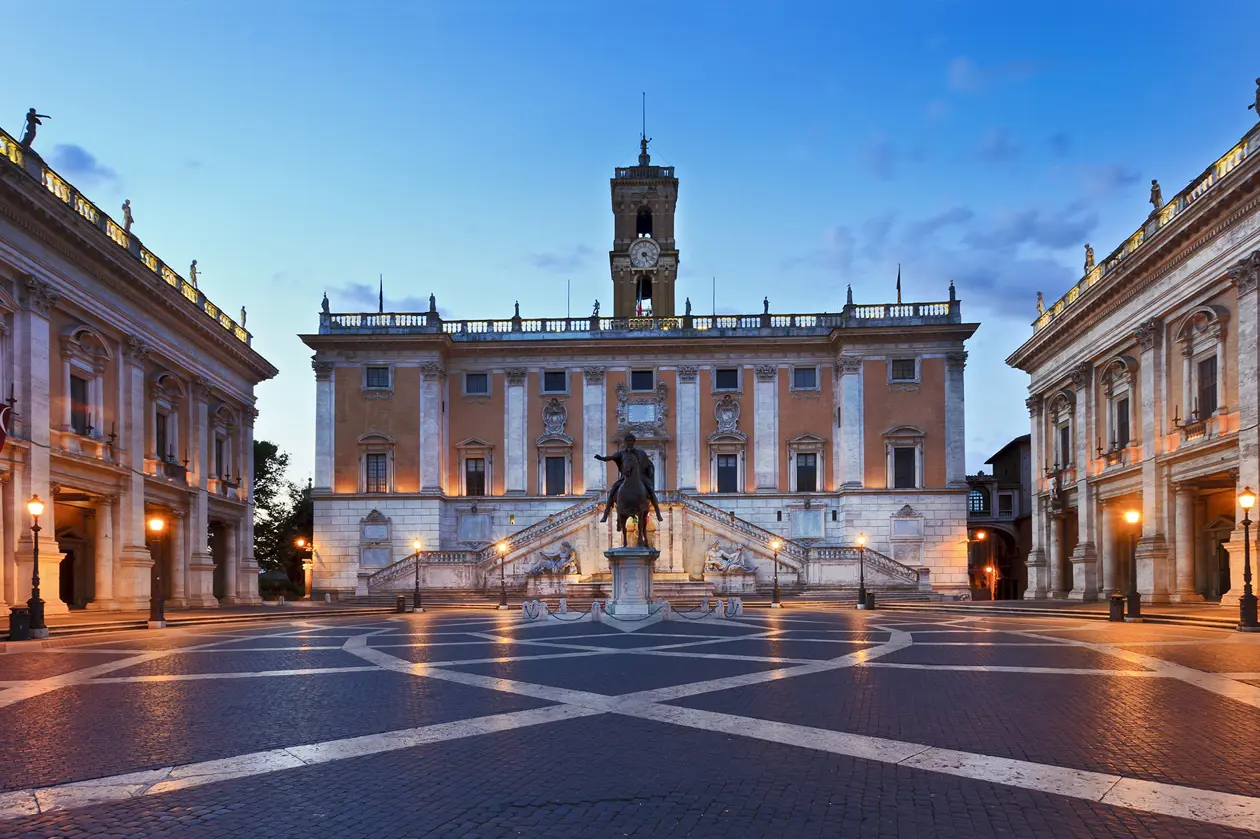
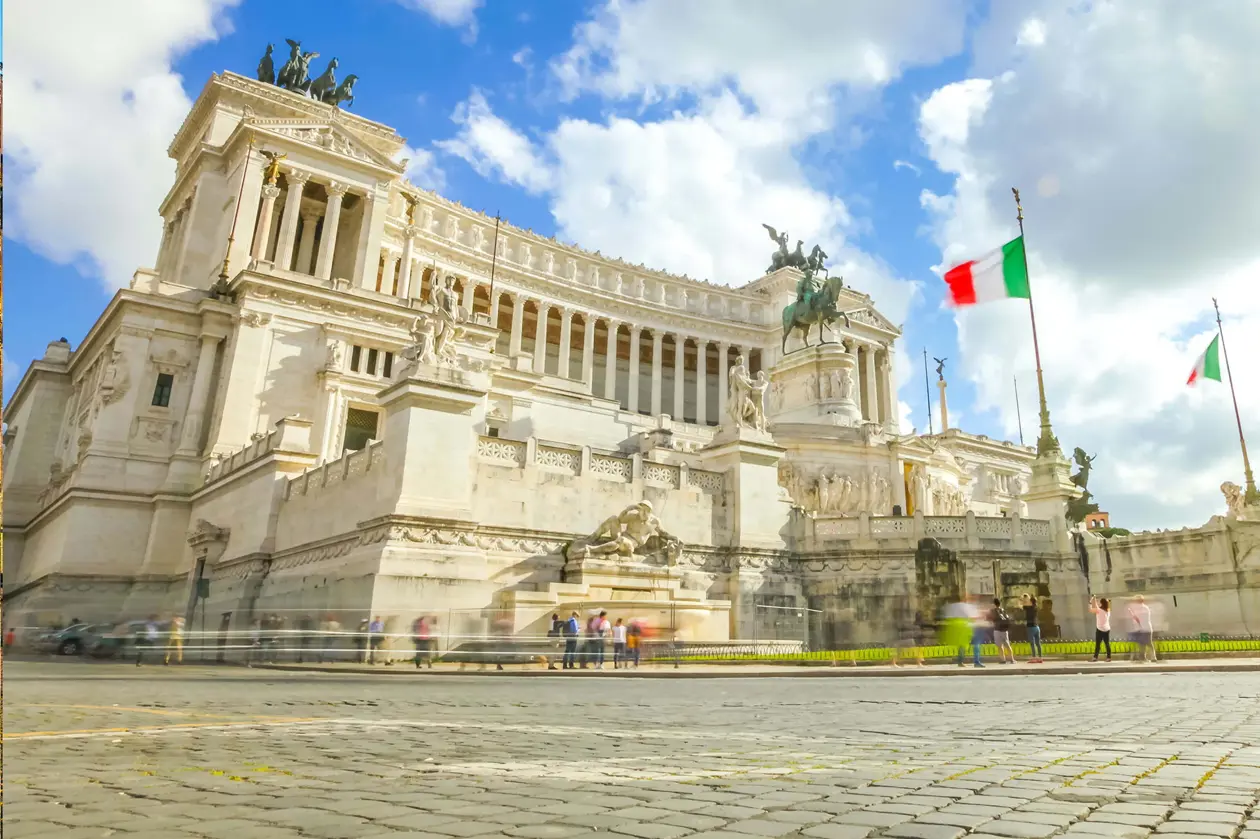
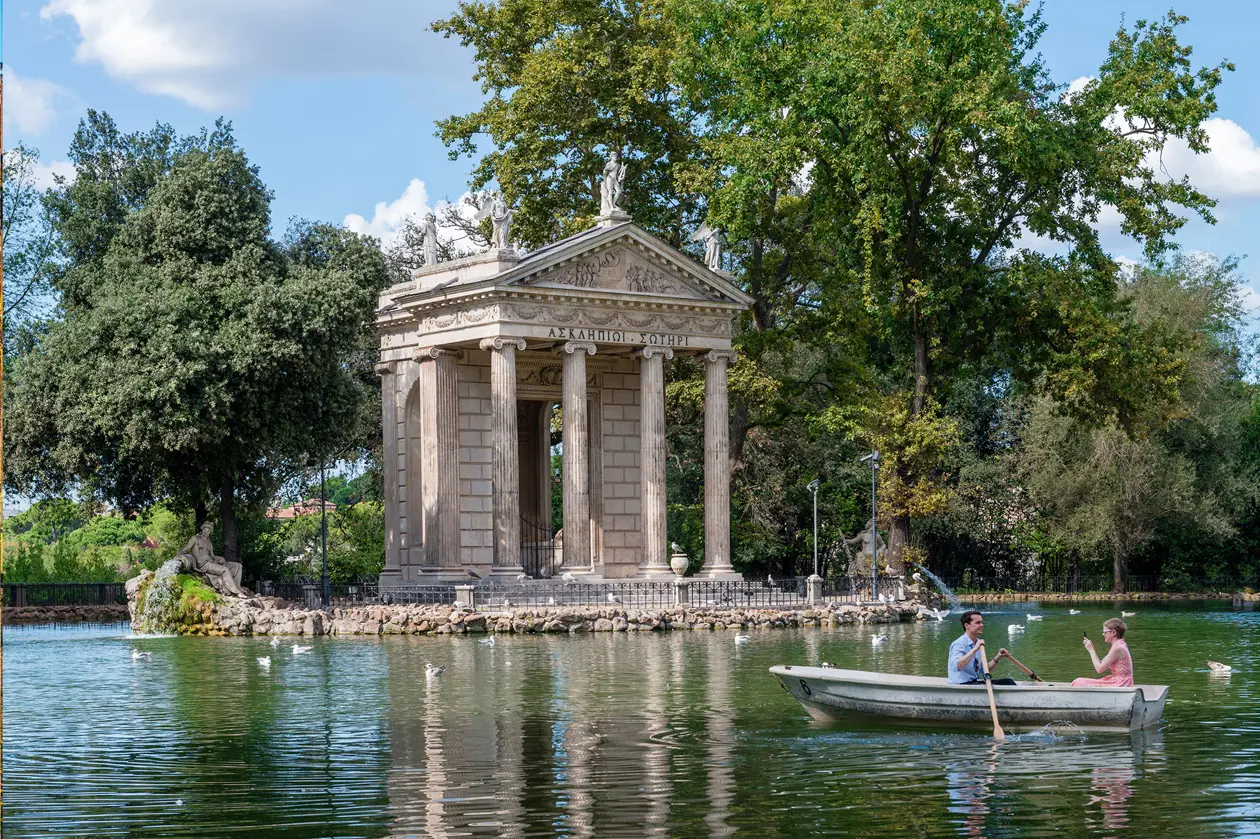
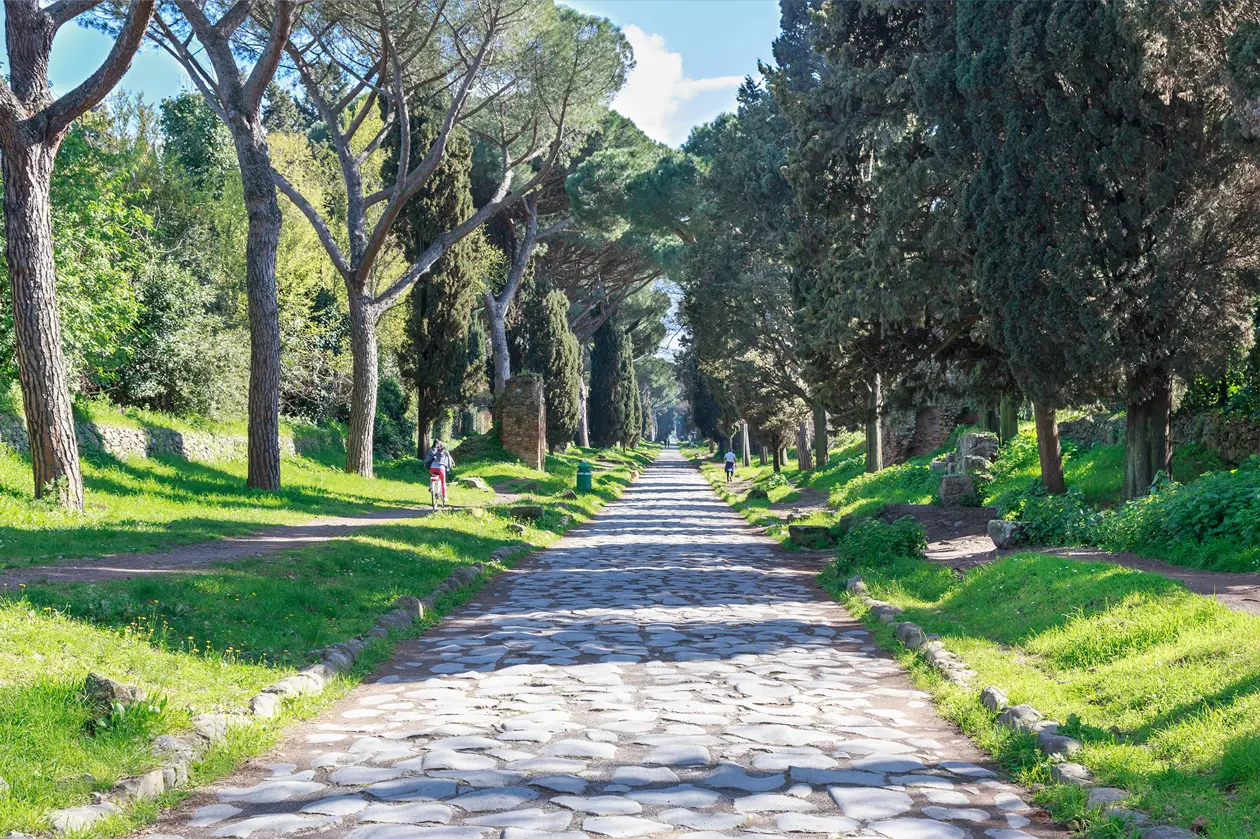




www.turismoroma.it
Partnership with Booking.com
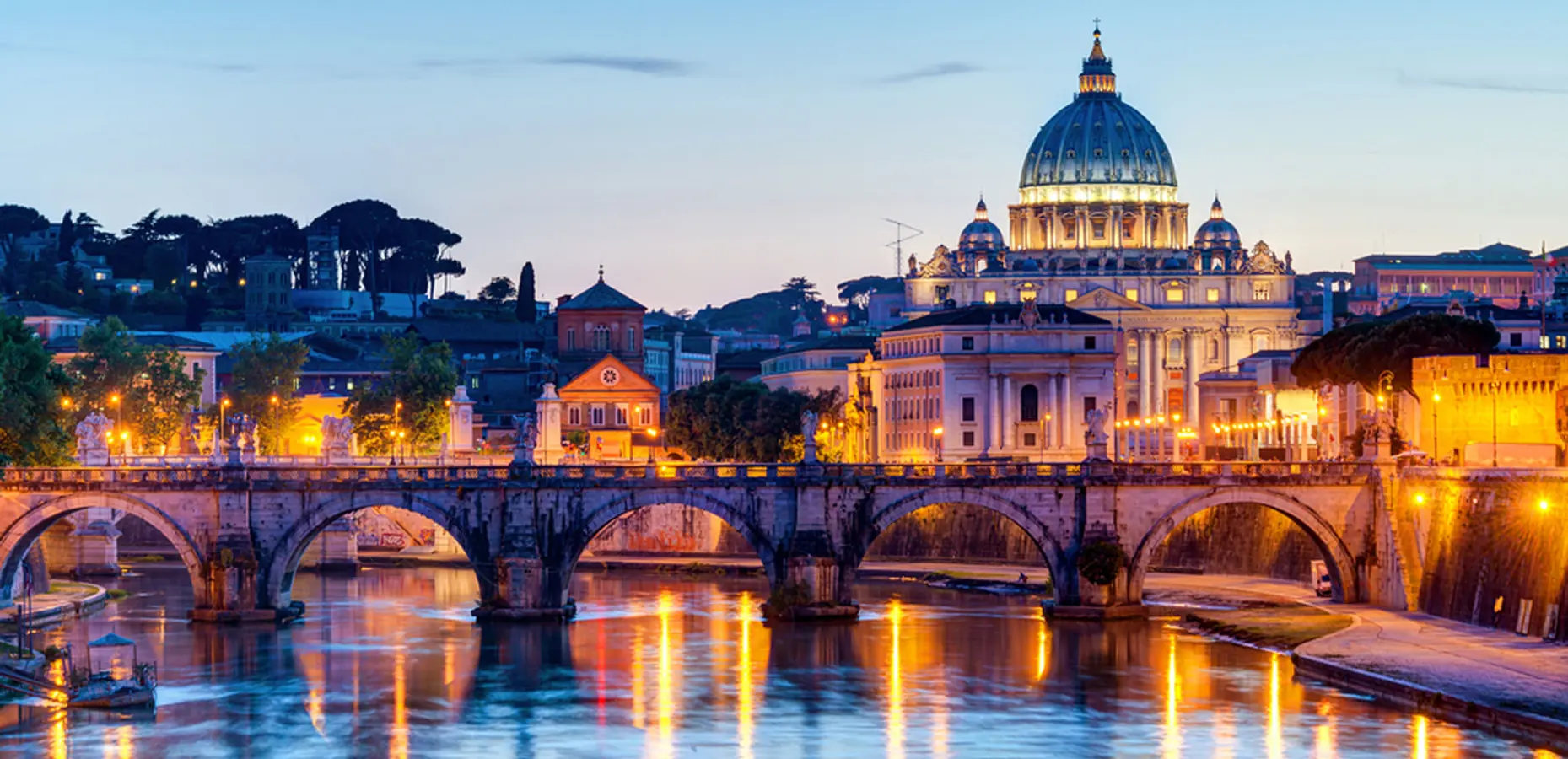
Rome is a welcoming city and offers different possibilities for accommodation.
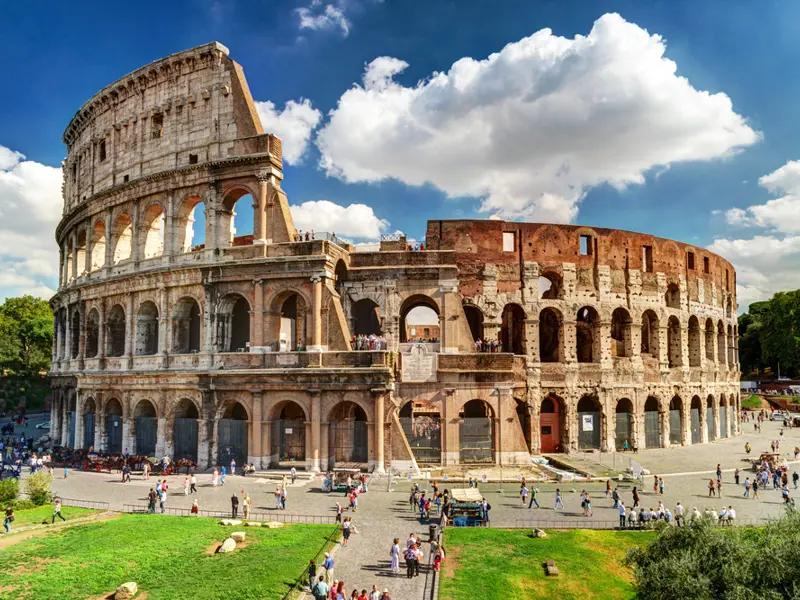
Known as the Colosseum, because the colossal bronze statue of Nero in the second century AD was placed near the monument, the real name is Flavian Amphitheatre and is probably the most famous monument in the world. Completed in 80 AD, the building was intended for the games and gladiator fights.
The exterior is composed of four overlapping architectural orders: the first three are formed by eighty arches framed by half-columns, while the fourth order is divided into panels interspersed with windows.
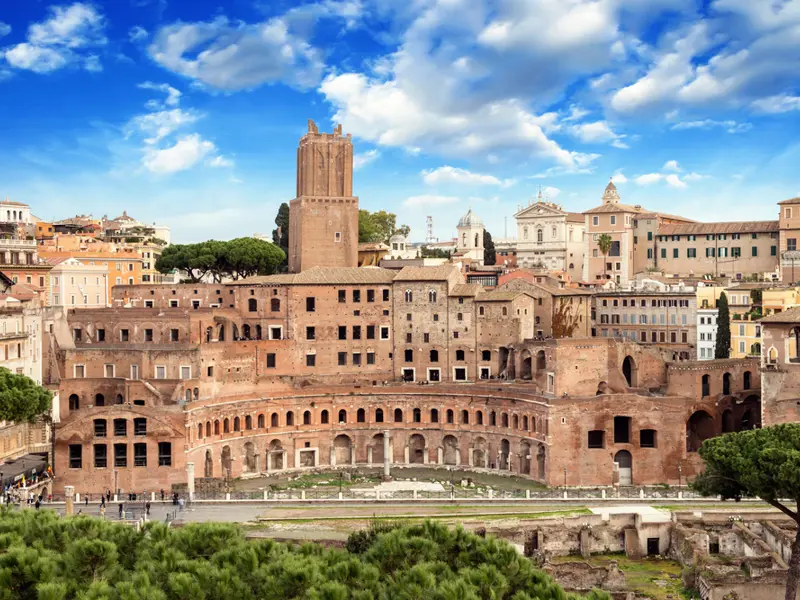
Caesar’s Forum, Augustus’ Forum, Transitional Forum and Trajan’s Forum, which is undoubtedly the grandest, make up, from an urban standpoint, an organic complex renamed in the modern era the “Imperial Forums”, reaching from Capitol Hill (Campidoglio) to the foot of the Quirinale Hill. Between 1924 and 1932, the Imperial Forums resurfaced following the demolition of which had been over the centuries built on top so as to clear the way for today’s Via dei Fori Imperiali.
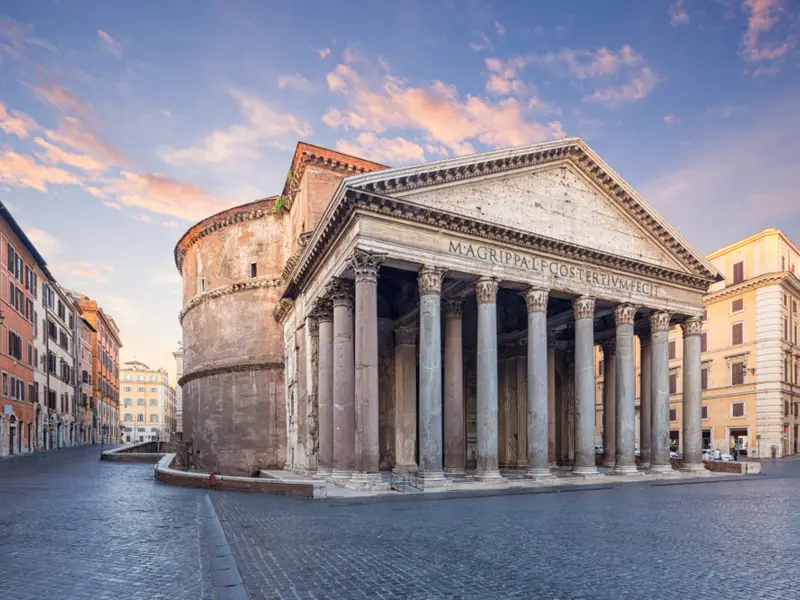
Dedicated to the worship of every God, the Pantheon was built by the Emperor Hadrian between 118 and 125 a.D. over the ruins of another temple dating back to 27 a.D. And a dedicatory inscription is clearly visible over today. In 609, it was converted into a Christian Church and consecrated to Santa Maria of the Martyrs. Turned into a memorial chapel for the kingsof Italy in 1870, the tombs of Vittorio Emanuele II, Umberto I and Margherita of Savoy are to be found here together with that of the celebrated Renaissance Artist Raffaello Sanzio da Urbino.
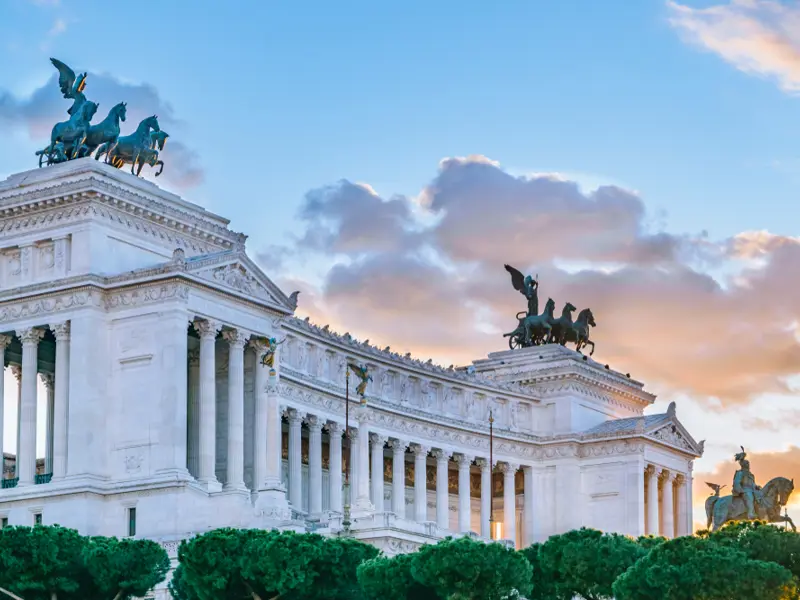
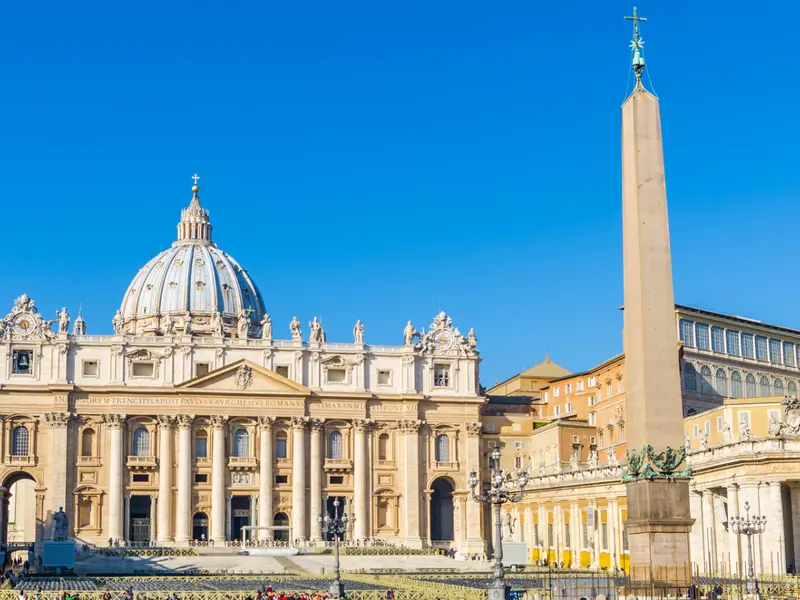
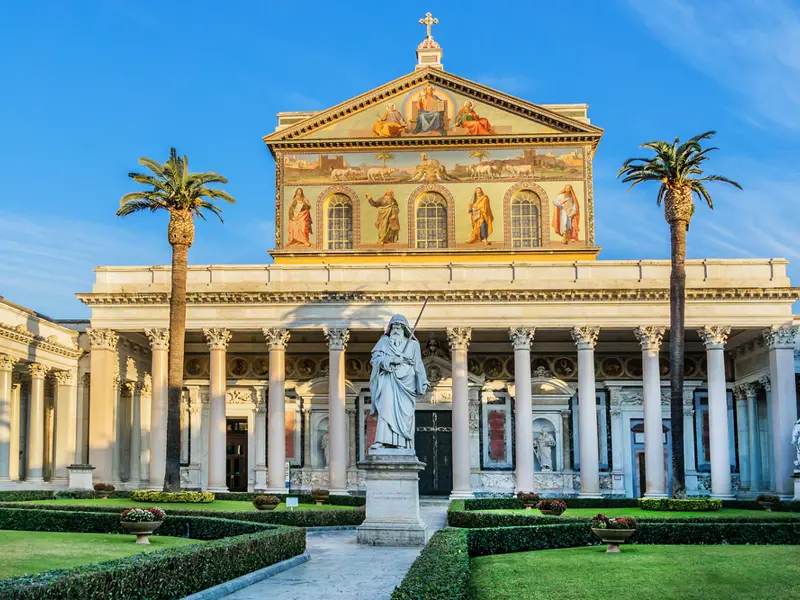
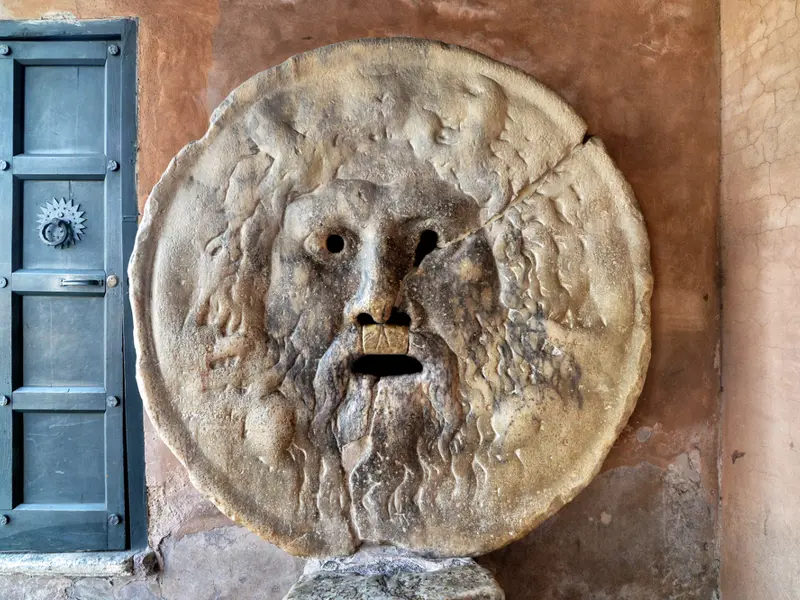
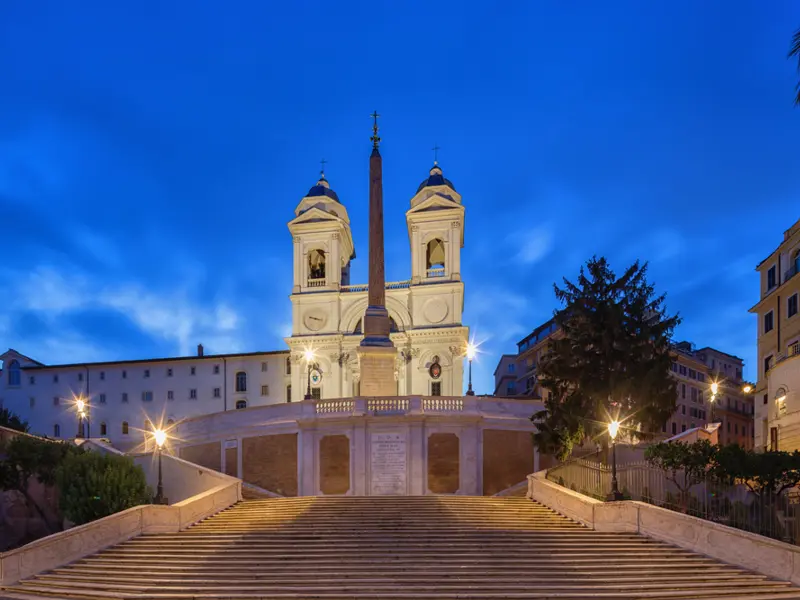
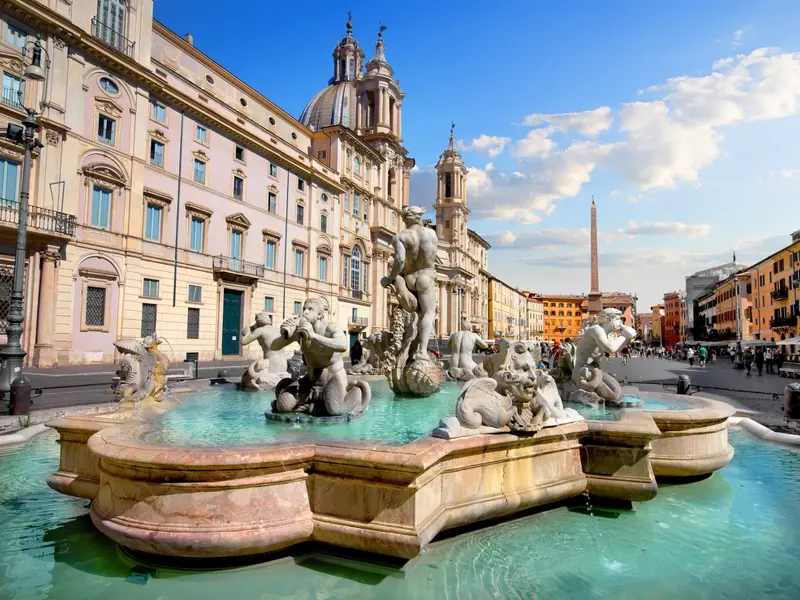
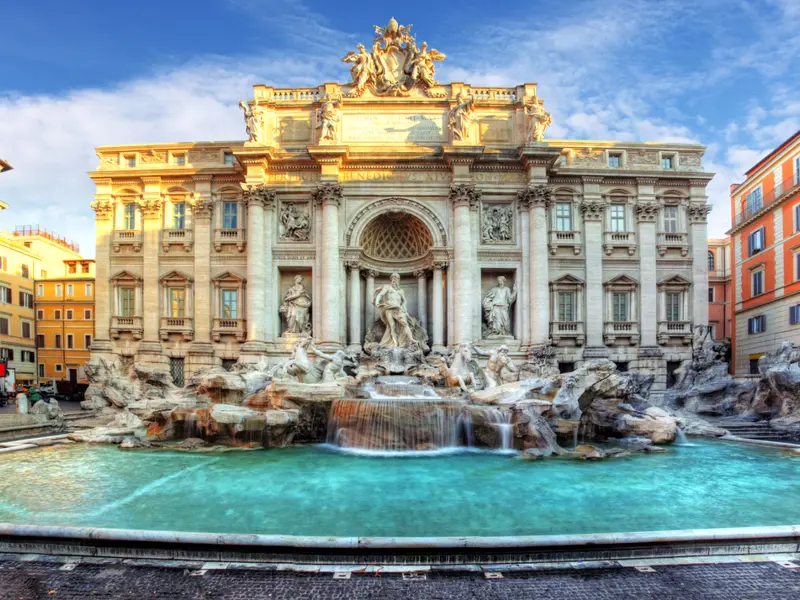
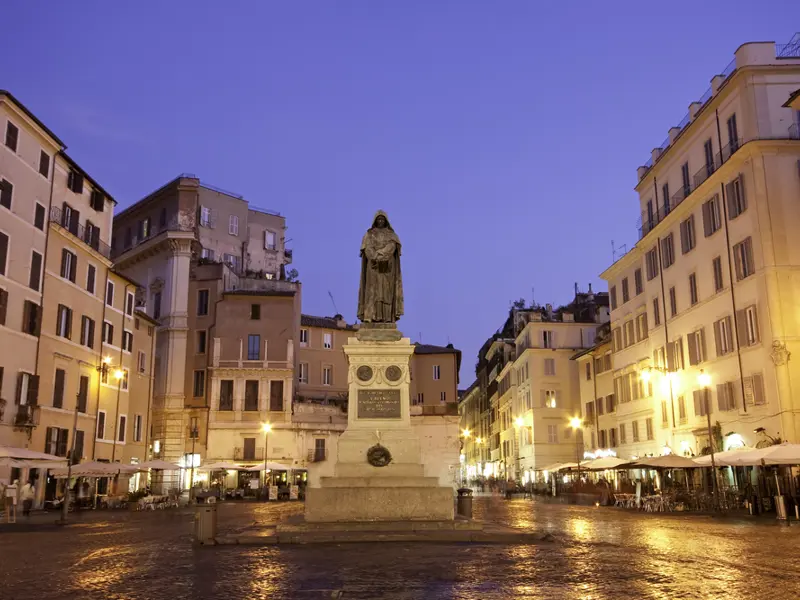
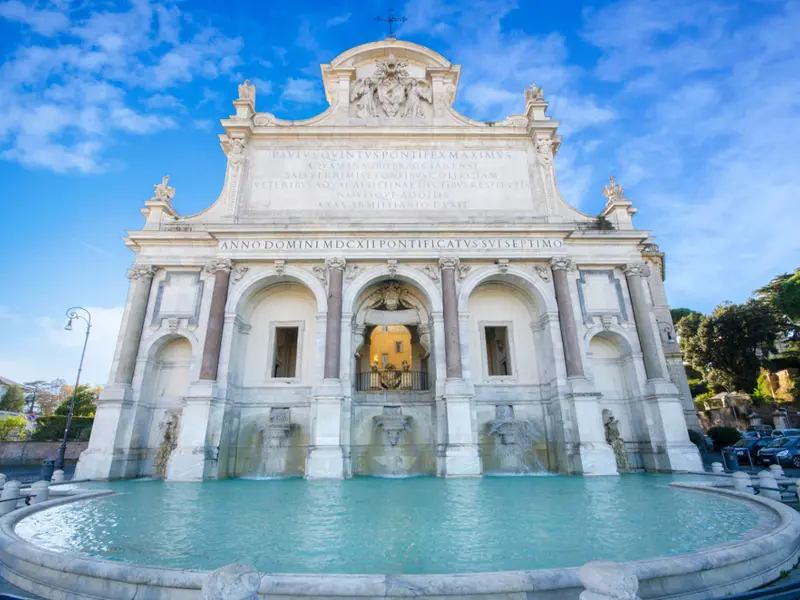
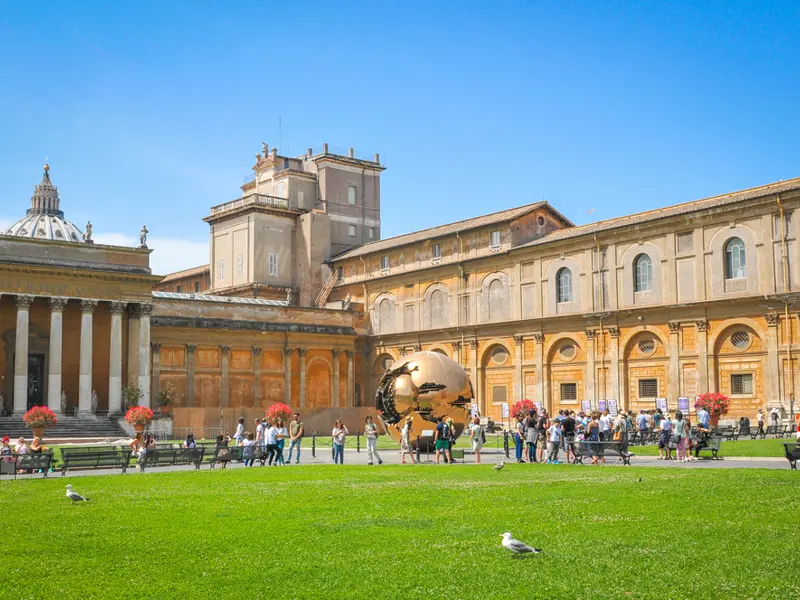
The magnificent and immense Vatican Museums are among the greatest and most important in the world. The Vatican Museums in fact encompass a number of different museums: the Pio-Clementino Museum, the Chiaramonti Museum, the Gregorian Etruscan Museum, the Gregorian Egyptian Museum, the Gregorian Profane Museum, the Pio-Christian Museum, the Ethnological Missionary Museum, the Collection of Modern Religious Art, the Upper Galleries Museum, the Vatican Library Museum, the Pinacoteca (Art Gallery) and of course the exquisite and unique Sistine Chapel.
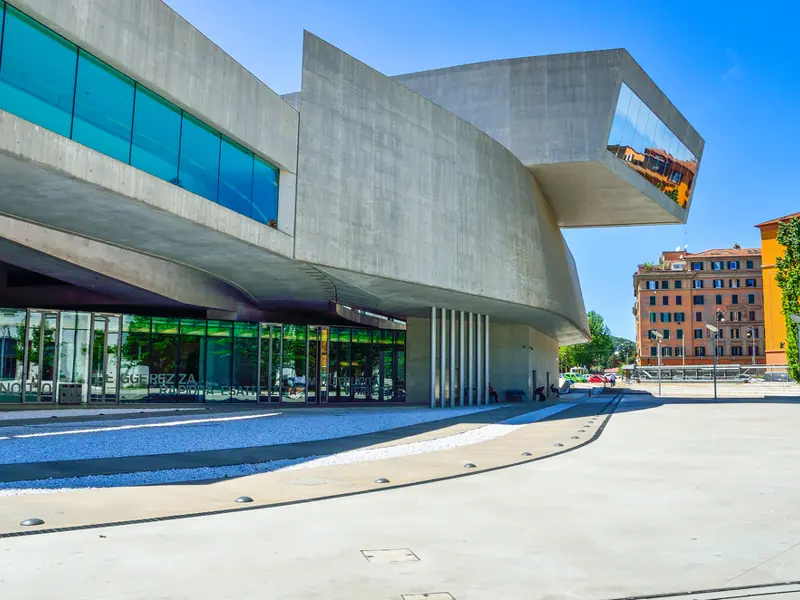
The National Museum for the 21st Century Arts, was designed by Anglo-Iraqi Architect Zaha Hadid. A complex developing horizontally conceived as a “delta of various rivers”: eight longitudinal spaces, interwoven and bowing onto each other over a surface covering 30,000 square metres. The interior spaces are devoted to contemporary creativity envisaged as basins for culture, experimentation, study and research.

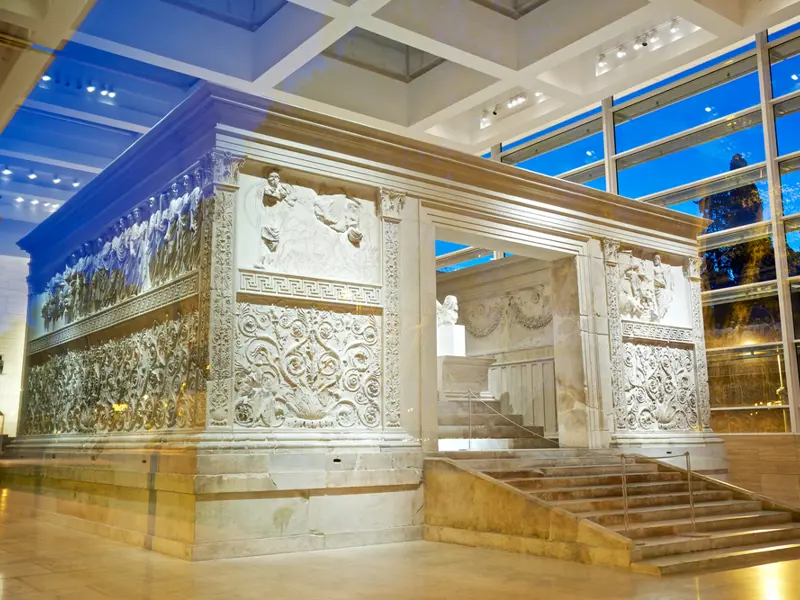
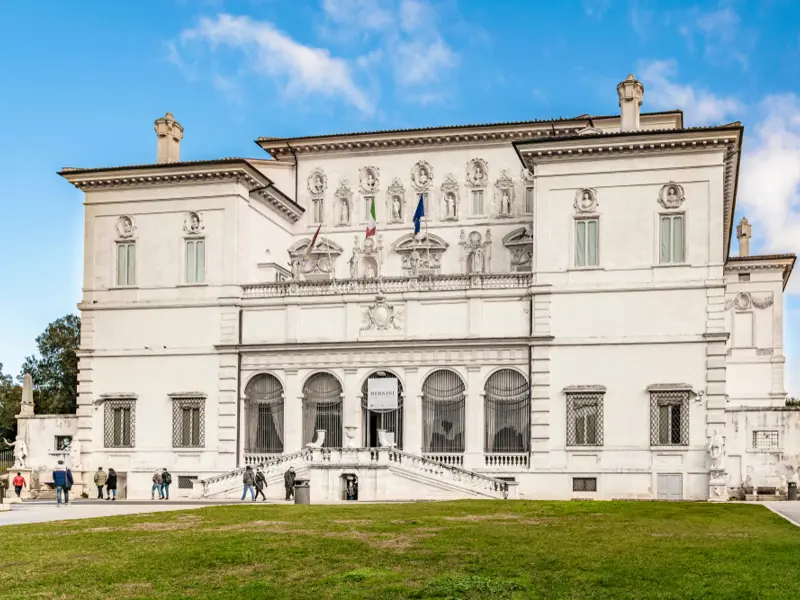
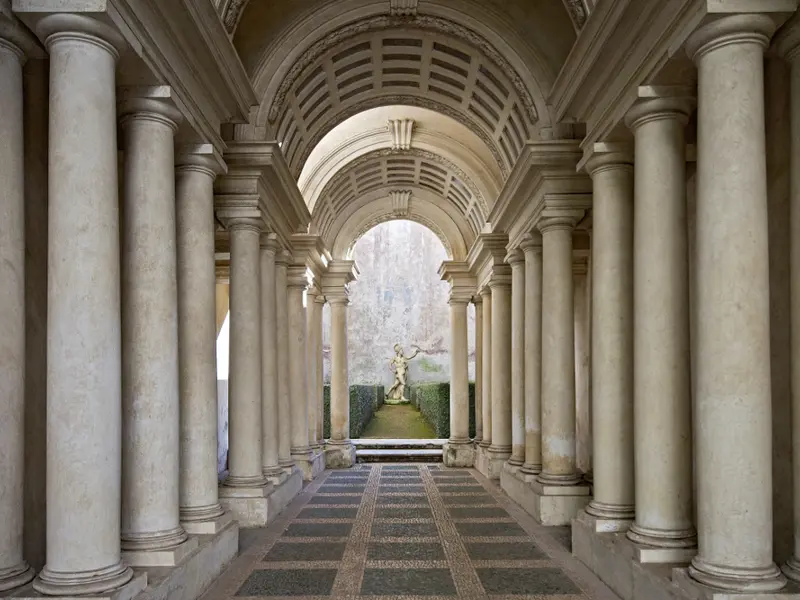
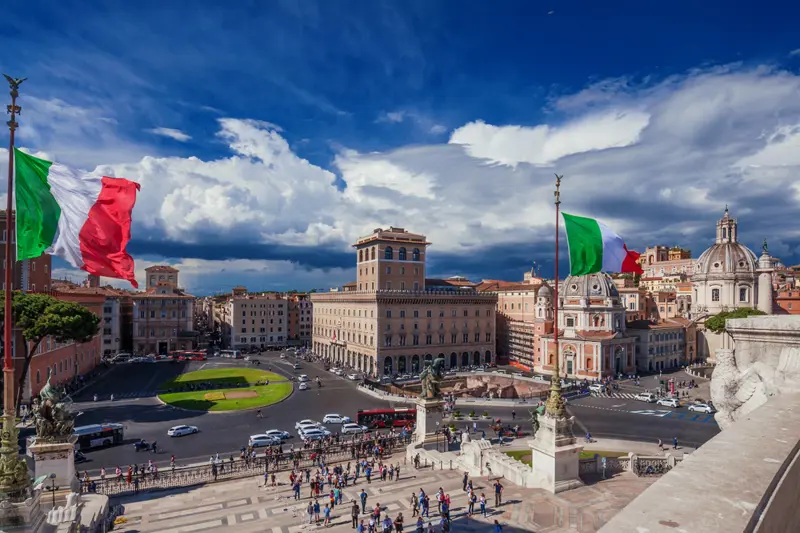
Rome offers sights, each with its own peculiarities, which enjoy a splendid view: from the Janiculum hill you can admire fascinating glimpses of the Old Town. From the terraces of the Vittoriano, two panoramic lifts, opened in 2007, can reach the highest point of the complex, from which you can admire Rome to 360°. From the Pincio you appreciate one of the most beautiful views of the whole world. Also you can admire a breathtaking view from the Garden of the Oranges and the dome of St. Peter.
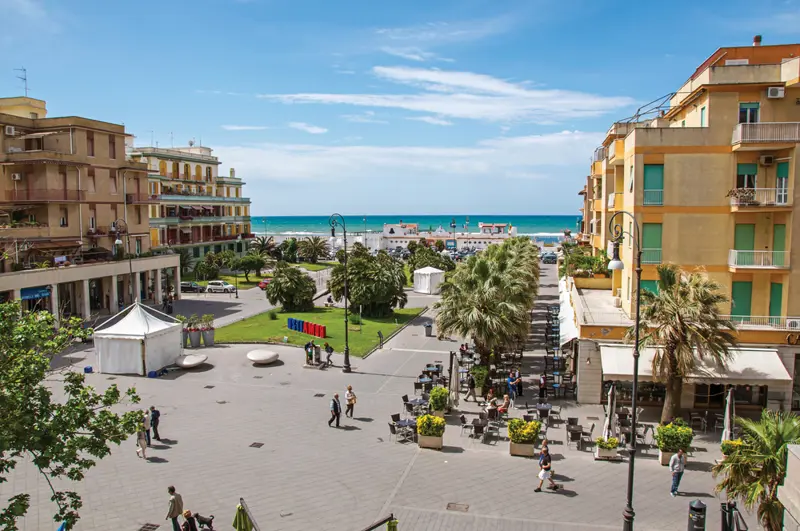
The modern architecture typical of the Art Nouveau gives a certain charm to the area of Ostia Lido. Some examples are the Art Nouveau buildings and villas in the old town, the working-class houses on Via della Marina and on Corso Duca di Genova, or the ‘Palazzo del Pappagallo’ on the Anco Marzio square, that you can reach walking on the promenade. This residential building, realized by the architect Mario Marchi in the late ‘20s, has a façade with an assortment of vivid colors, returned to their original splendor and brightness thanks to a recent restoration. Also belong to this period: the ‘Palazzo del Governatore’ and the ‘Colonia’.
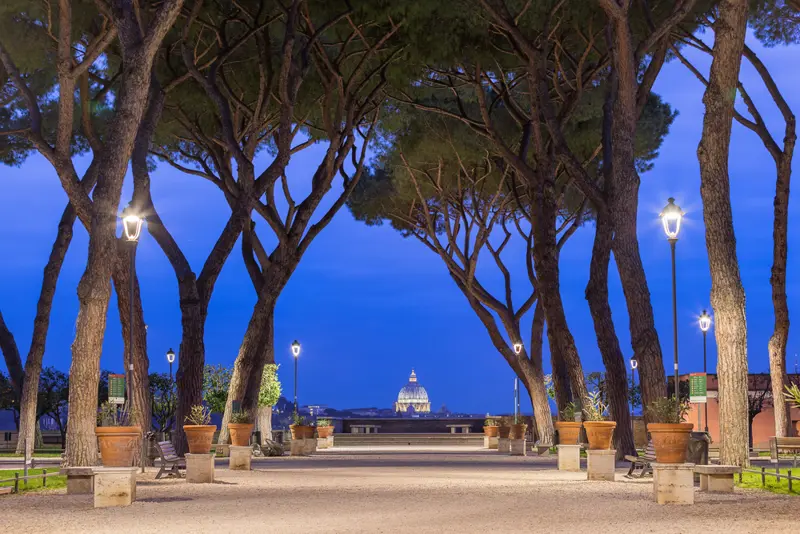
Parco Savello, also known as Giardino degli Aranci, is a small garden that stands on top of the Aventine Hill, one of the most elegant hills in Rome, between the medieval walls and the remains of the ancient fortress of the Savelli family. The trees in the park were planted in memory of S. Domenico who founded his convent right here. From Parco Savello it is possible to admire an enchanting panorama of Rome, from the bend of the Tiber to the Basilica of San Pietro. Leaving the Orange Garden and turning right, you arrive in the Piazza dei Cavalieri di Malta designed by Giovan Battista Piranesi in 1765. A curiosity: from the lock of the door that leads to the Villa dei Cavalieri you can glimpse the dome of St. Peter, beautifully framed from the green gardens.
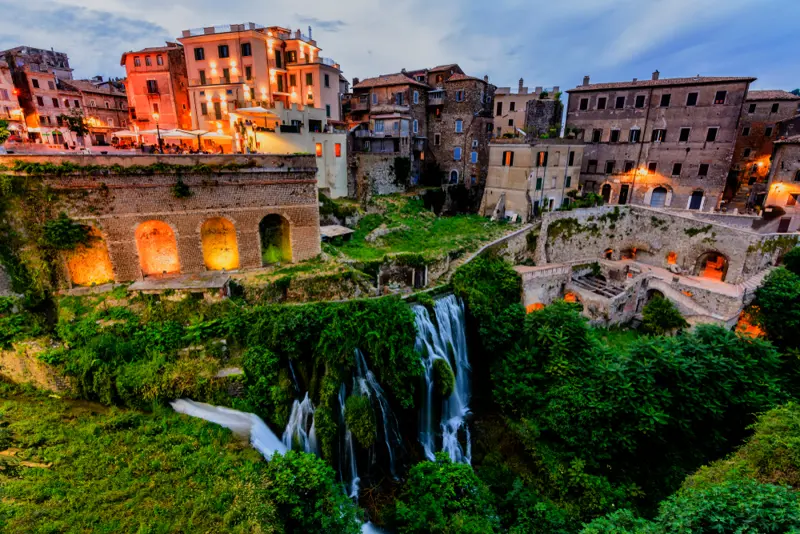
Tivoli is located about 25 kilometers from Rome. Worth a visit to admire Villa Adriana, the large villa that belonged to the Roman emperor Hadrian, which bears witness to the high level of Roman architecture. Also Villa d'Este, built in 1550 by Cardinal Ippolito II d'Este, famous for its numerous water features. Also not to be missed are the naturalistic park of Villa Gregoriana and the Sanctuary of Ercole Vincitore.
